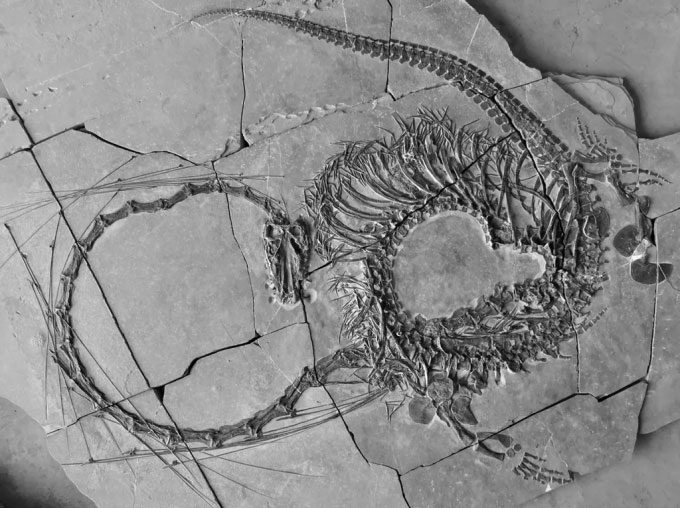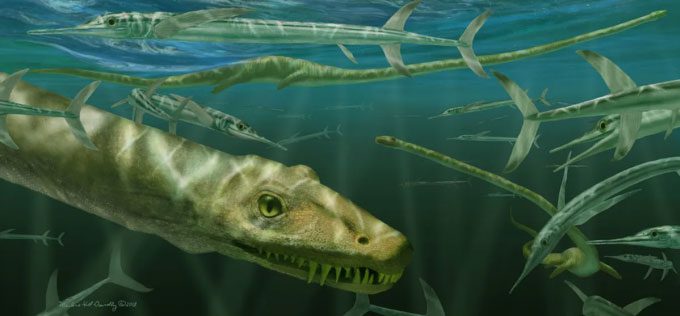The marine reptile known as the Chinese dragon has a neck measuring 2.3 meters long with 32 cervical vertebrae, allowing it to ambush prey underwater.
Scientists have revealed impressive fossils of an ancient marine reptile discovered in China, as reported by Live Science on February 23. This creature lived 240 million years ago and is dubbed the “Chinese dragon”, scientifically named Dinocephalosaurus orientalis. It utilized its uniquely long neck to ambush prey in shallow waters during the Triassic period (252 to 201 million years ago).

Fossil of Dinocephalosaurus orientalis with a long neck. (Photo: National Museum of Scotland).
The Chinese dragon was first discovered in limestone quarries in southern China in 2003, but scientists were uncertain about its appearance due to incomplete fossils. Now, with the discovery of additional fossils, they have pieced together to fully reconstruct the body of this ancient predator, which measures up to 5 meters long. The new study is published in the journal Earth and Environmental Science: Transactions of the Royal Society of Edinburgh.
“This is another example of the strange and wonderful world of the Triassic period that continues to baffle paleontologists. We are certain it will excite the world with its striking appearance, reminiscent of the dragon in mythology—a long, serpent-like creature,” said Nick Fraser, head of natural sciences at the National Museum of Scotland.


Illustration of the “Chinese dragon” swimming with several ancient fish species. (Photo: Marlene Donelly).
The fossils reveal several remarkable features of this ancient marine reptile. The most impressive is its neck, which is nearly 2.3 meters long with 32 distinct vertebrae, while giraffes (as well as humans) only have 7 cervical vertebrae.
The multi-vertebrate and serpent-like neck of the Chinese dragon may have helped it effectively reach and attack prey. Some fish fossils are still preserved in the belly of this sea monster. Additionally, it possessed serrated teeth and paddle-like limbs. Despite living underwater and having a long, slender neck, the Chinese dragon is not closely related to the snake-headed lizard, which evolved about 40 million years later and may have inspired the Loch Ness monster legend.
“We hope that future studies will provide further insights into the evolution of this group of animals, particularly how its long neck functioned,” said Stephan Spiekman, a member of the research team and a postdoctoral researcher at the State Museum of Natural History Stuttgart.


















































